Photos Show Why the North Dakota Pipeline Is Problematic
ACTIVISM, 29 Aug 2016
Kate Bubacz and Daniella Zalcman - BuzzFeed News
A proposed oil pipeline is set to begin construction on tribal lands in North Dakota. Members of various Native American reservations gathered Monday [15 Aug] to try to stop it.
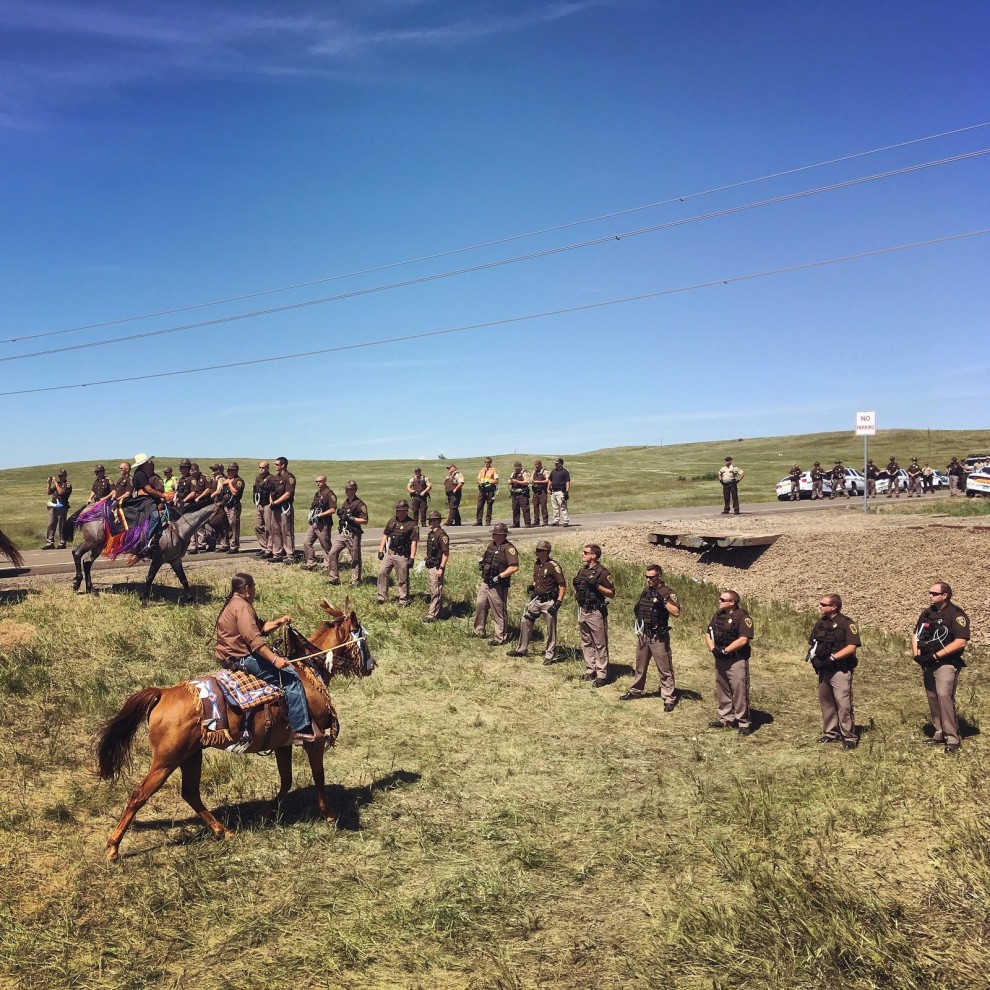
Riders from the Standing Rock, Rosebud, and Lower Brule Lakota reservations came together on horseback to push back a police line that had formed between a group of protesters and the entrance to the Dakota Access Pipeline construction site. Daniella Zalcman
17 Aug 2016 – Last week, the federal government gave final approval to the construction of the Dakota Access Pipeline, which will run for 1,172 miles to transport crude oil from North Dakota’s Bakken oilfields to Patoka, Illinois.
Hundreds of protesters, primarily Lakota and Dakota from Native American reservations within a several-hundred-mile radius, convened over the weekend at the edge of the Standing Rock reservation in North Dakota to voice their anger.
The pipeline would travel through lands sacred to the Lakota people, and cross under the Missouri, Mississippi, and Big Sioux rivers.
A possible spill, which can occur with pipelines, would mean contaminating farmland and drinking water for millions.
After a series of tense interactions with North Dakota state police on Monday, the protesters succeeded in temporarily halting the beginning stages of construction.

Protesters stand at the front barricades of the protest zone, holding signs that read “Water is sacred” and “Mni Wiconi” (“Water is life” in Lakota). Daniella Zalcman
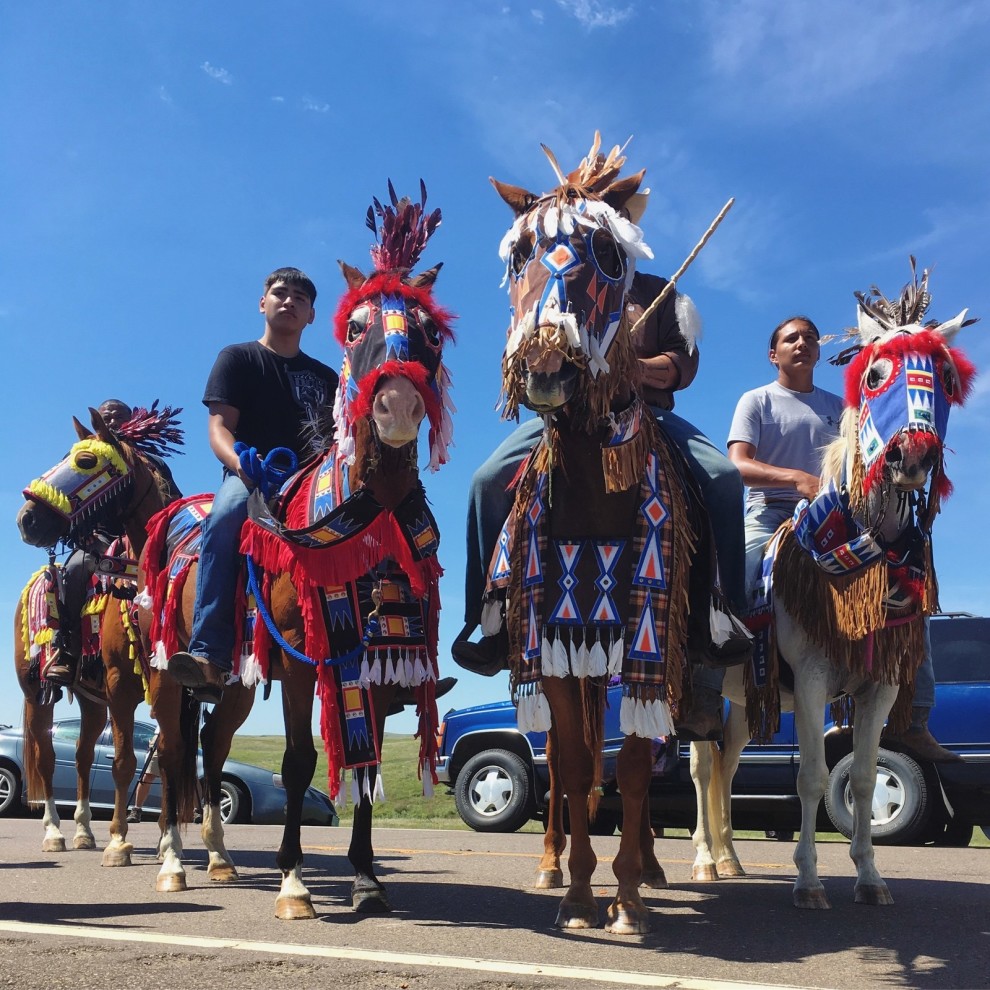
Horses and riders from the Rosebud reservation arrive to support the Standing Rock community. The horses are in traditional Lakota regalia. Daniella Zalcman
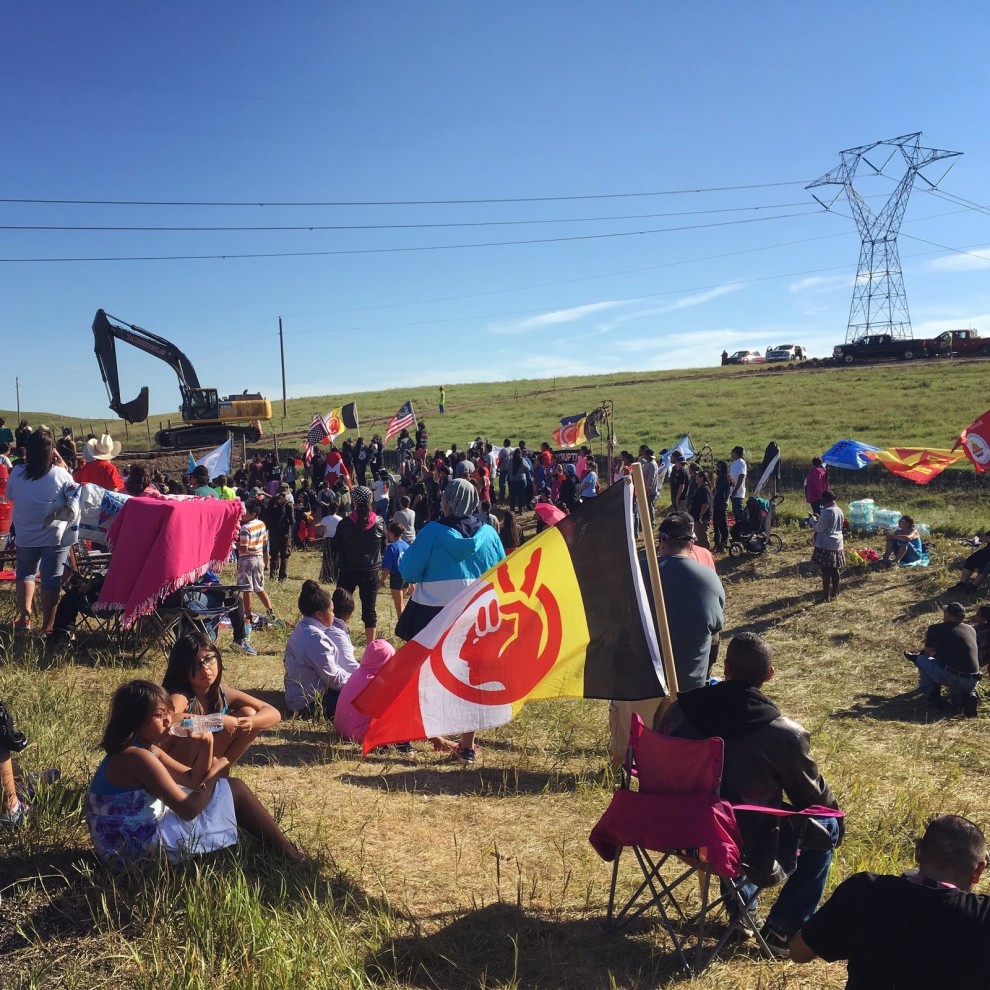
Protesters congregate next to a construction site for the Dakota Access Pipeline on Monday morning, as a crew arrives with machinery and materials to begin cutting a work road into the hillside. The flag in the foreground belongs to the American Indian Movement. Daniella Zalcman
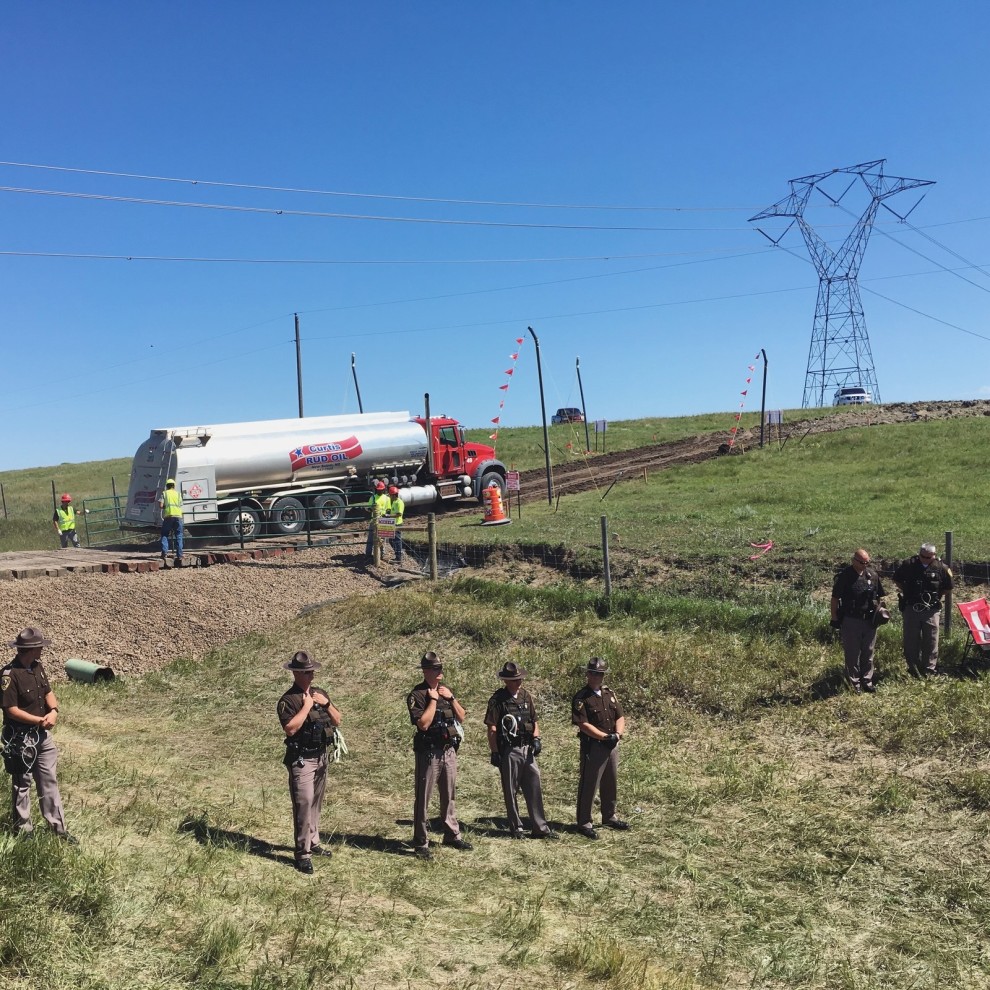
North Dakota state police form a line between the protesters and the entrance to the construction site as a tank truck turns into the property. Daniella Zalcman
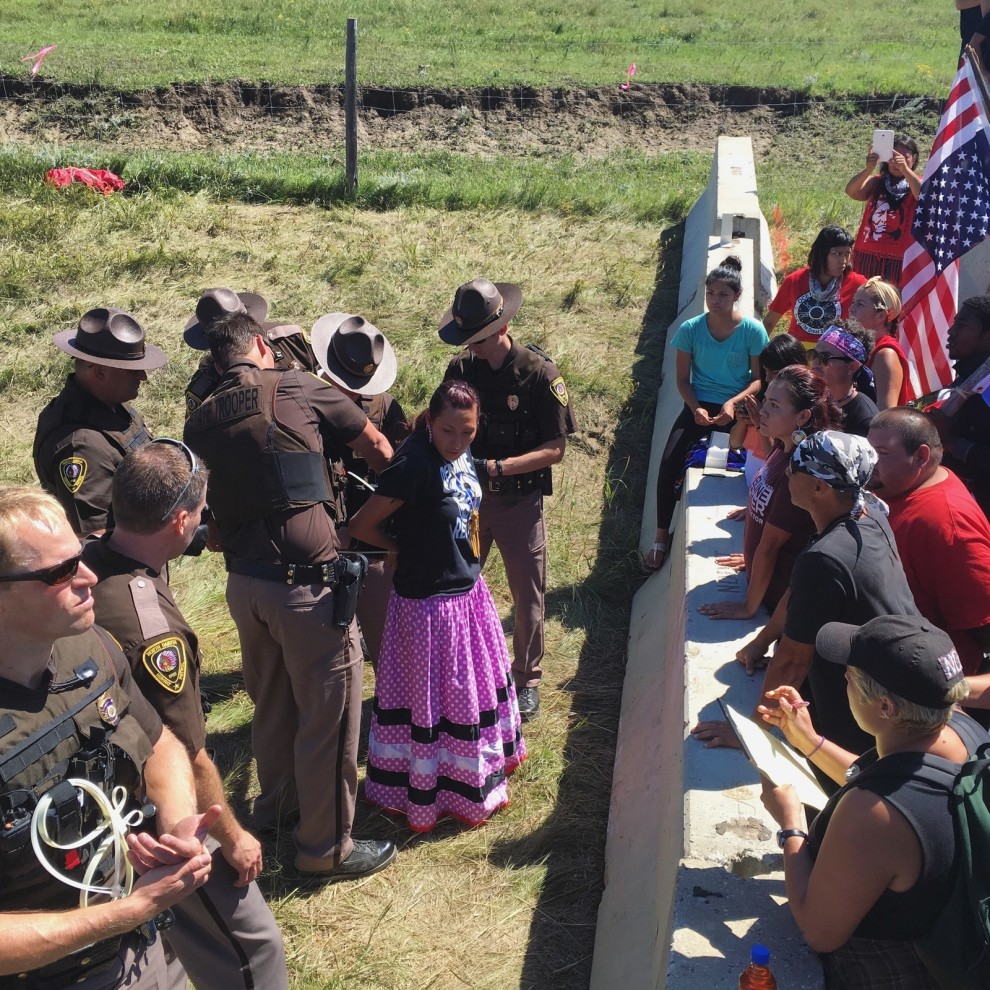
A protester is arrested for standing on the outer layer of barricades that separate the protest site from the police line and construction zone on Monday morning. Daniella Zalcman
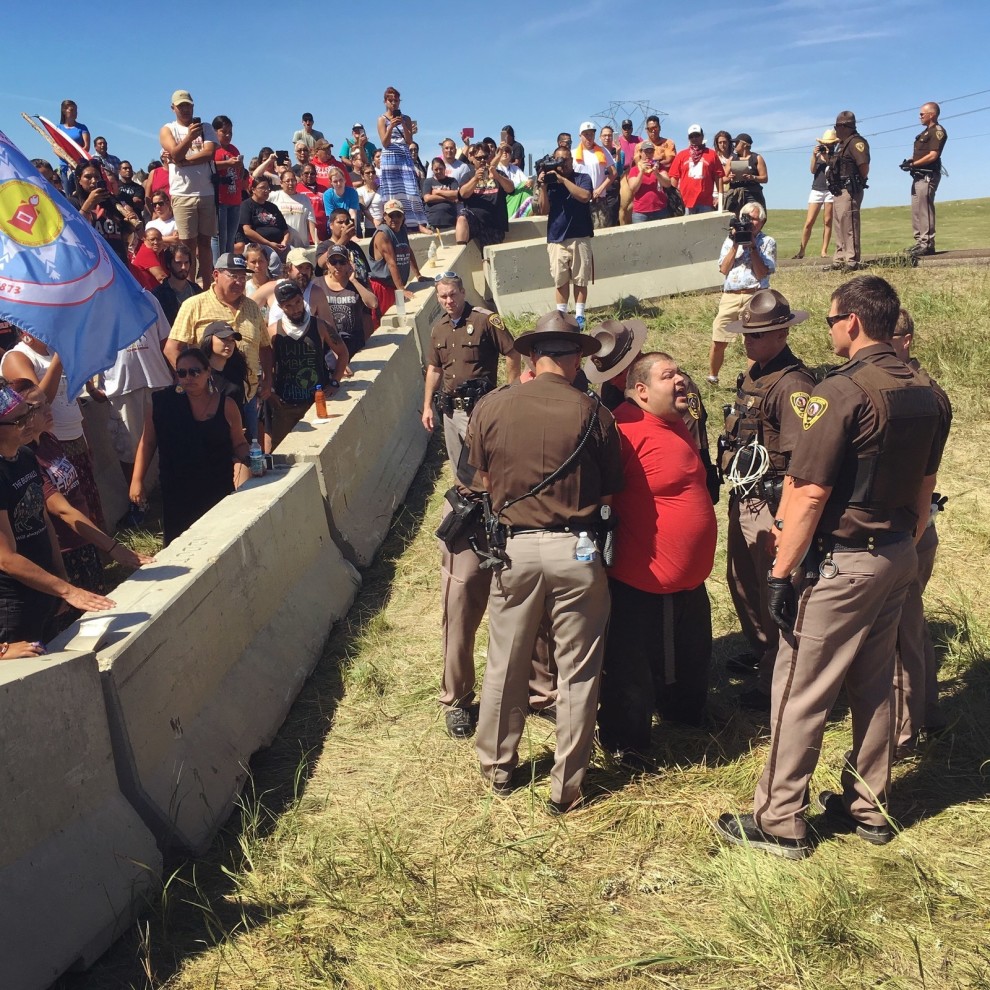
A protester is arrested for standing on the outer layer of barricades that separate the protest site from the police line and construction zone on Monday morning. Daniella Zalcman
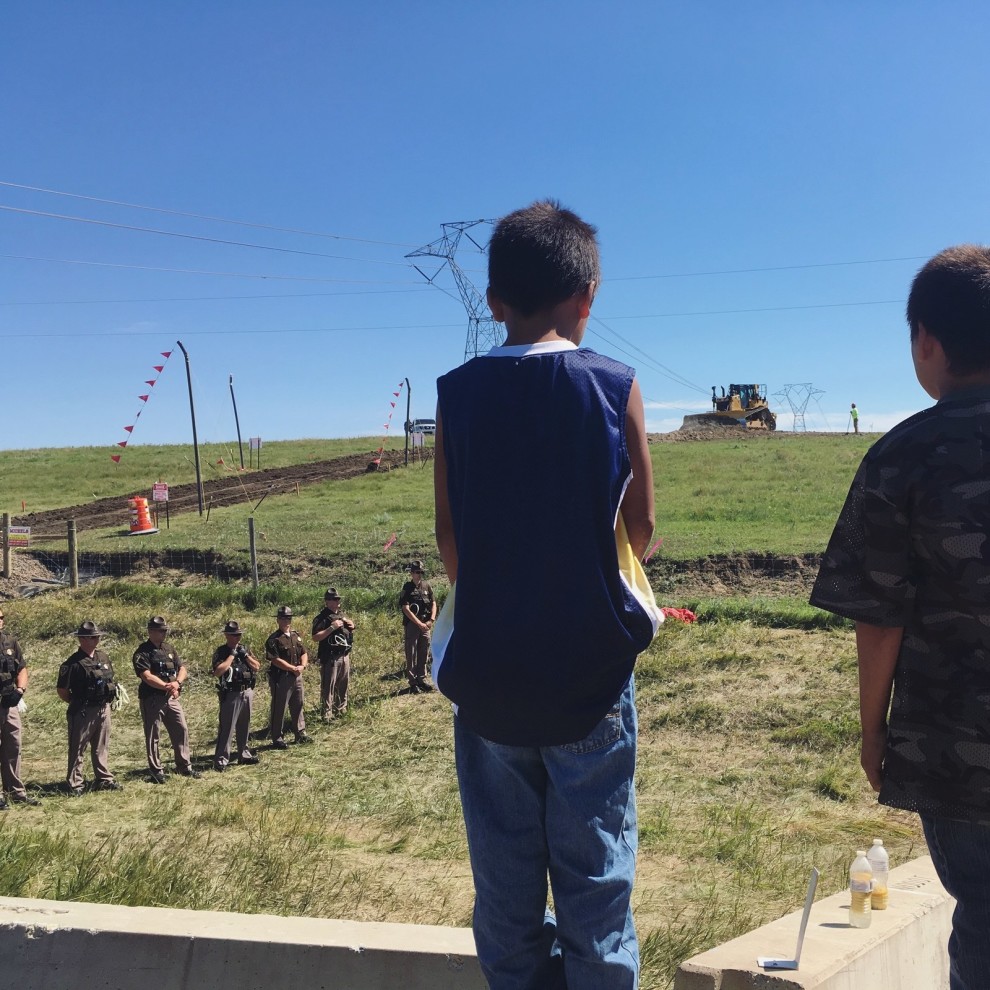
Two young Lakota boys watch as construction machinery drives onto the Dakota Access Pipeline construction site, just over a mile from the banks of the Missouri River. Daniella Zalcman
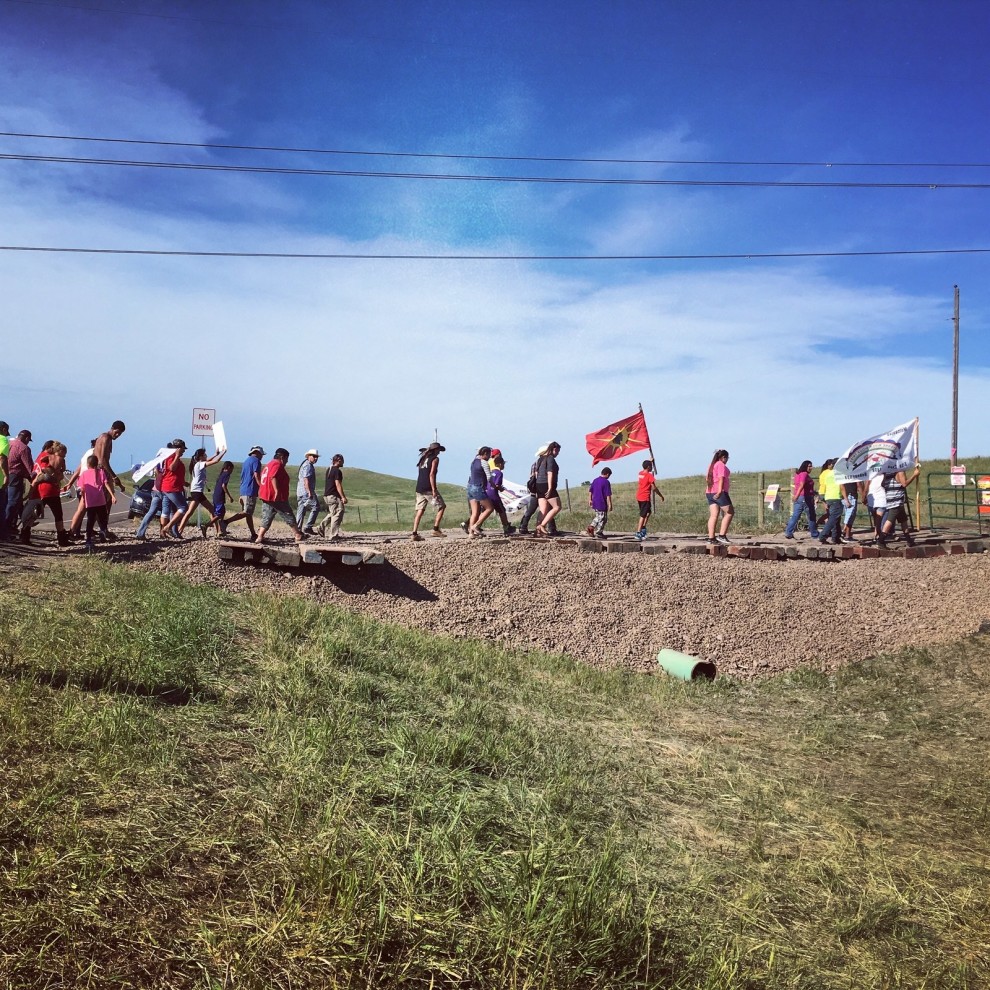
After the protesters disrupted the construction site and shut down work for the day, a group marched up to the main gates. Daniella Zalcman
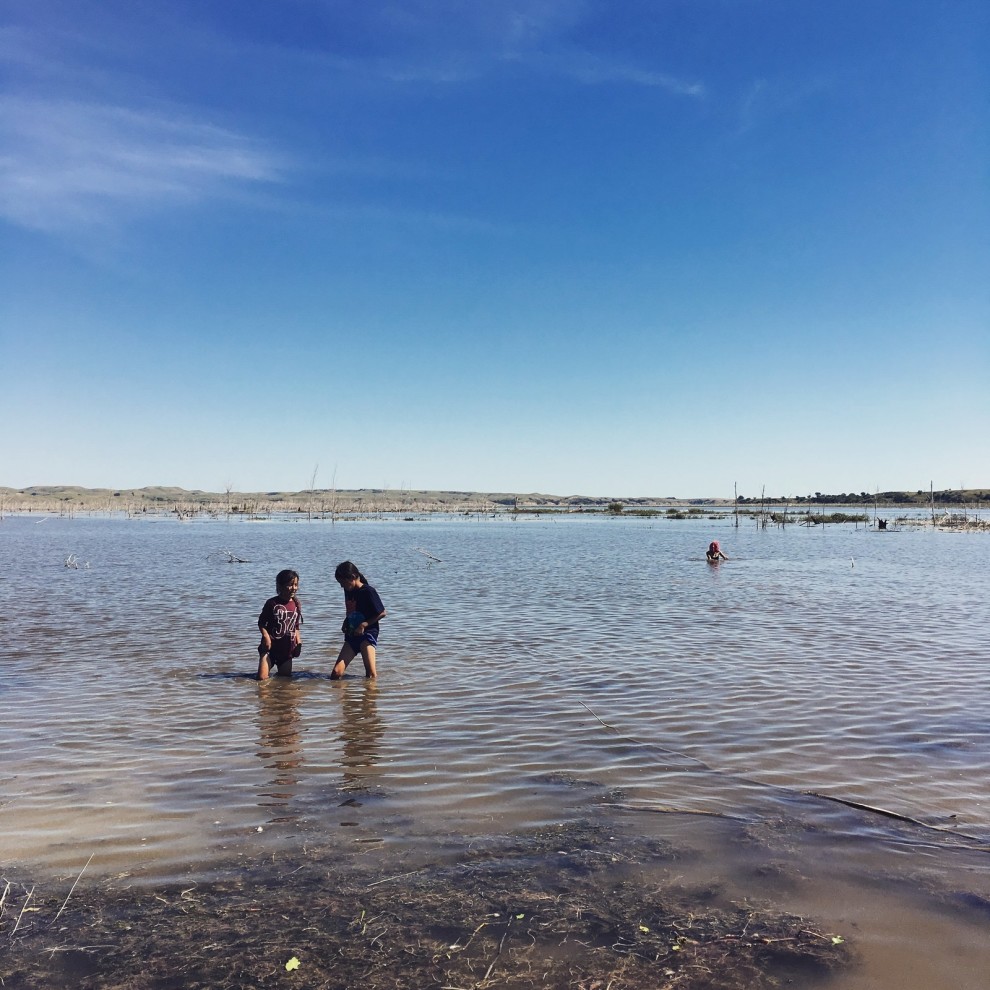
Children play in the Missouri River, a mile from the proposed construction of the Dakota Access Pipeline. Daniella Zalcman
___________________________________
Kate Bubacz is a Senior Photo Editor for BuzzFeed News and is based in New York. Contact her at kate.bubacz@buzzfeed.com.
Daniella Zalcman is a documentary photographer based between London and New York. Her work tends to focus on the legacy of western colonization. She is a multiple grantee of the Pulitzer Center on Crisis Reporting, a fellow with the International Women’s Media Foundation, and a member of Boreal Collective. Contact her at dani+bf@dan.iella.net.
DISCLAIMER: The statements, views and opinions expressed in pieces republished here are solely those of the authors and do not necessarily represent those of TMS. In accordance with title 17 U.S.C. section 107, this material is distributed without profit to those who have expressed a prior interest in receiving the included information for research and educational purposes. TMS has no affiliation whatsoever with the originator of this article nor is TMS endorsed or sponsored by the originator. “GO TO ORIGINAL” links are provided as a convenience to our readers and allow for verification of authenticity. However, as originating pages are often updated by their originating host sites, the versions posted may not match the versions our readers view when clicking the “GO TO ORIGINAL” links. This site contains copyrighted material the use of which has not always been specifically authorized by the copyright owner. We are making such material available in our efforts to advance understanding of environmental, political, human rights, economic, democracy, scientific, and social justice issues, etc. We believe this constitutes a ‘fair use’ of any such copyrighted material as provided for in section 107 of the US Copyright Law. In accordance with Title 17 U.S.C. Section 107, the material on this site is distributed without profit to those who have expressed a prior interest in receiving the included information for research and educational purposes. For more information go to: http://www.law.cornell.edu/uscode/17/107.shtml. If you wish to use copyrighted material from this site for purposes of your own that go beyond ‘fair use’, you must obtain permission from the copyright owner.